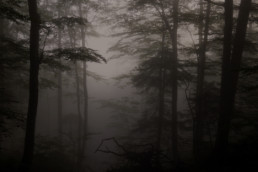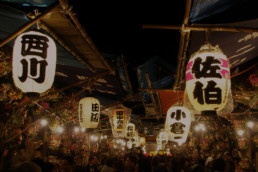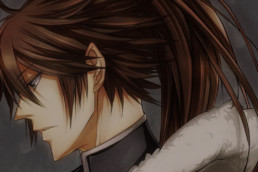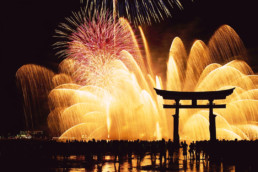Japan Travel: Aokigahara
Aokigahara
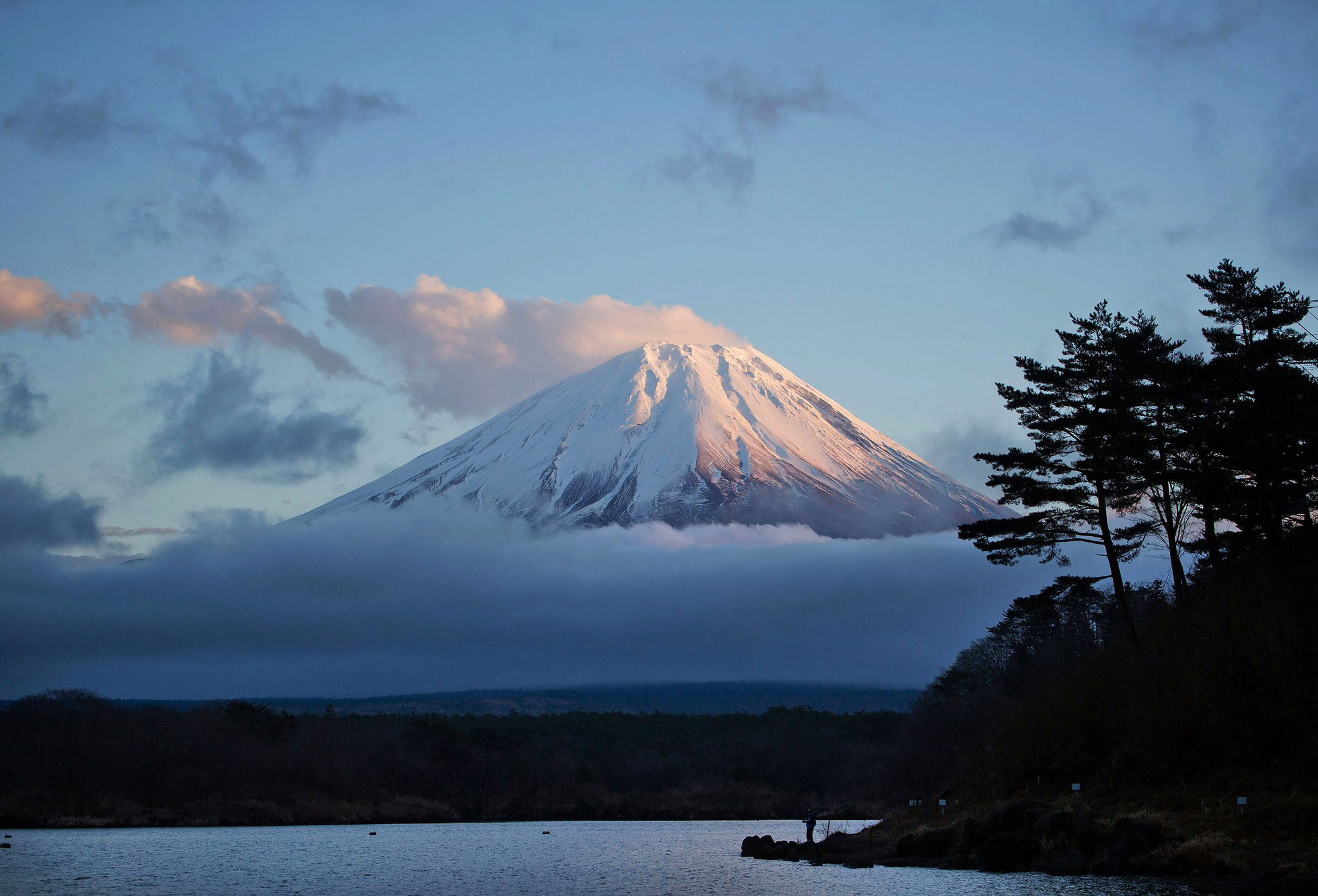
Photo credits: Ko Sasaki for The New York Times
Jukai, the sea of trees in which the soul drowns
At the foot of Mount Fuji, born from the volcanic eruption of Mount Nagao in 864 C.E., lies Aokigahara (青木ヶ原) best know with the name of Jukai (樹海, sea of trees). It is a thick forest that extends for 35 km² and that is made of caves and a maze-like vegetation with its cypresses, oaks and shrubs, including the Japanese snow flower. Its particular conformation prevents wind and solar rays from entering, giving it a spectral and silent appearance. In winter the thick fog that surrounds it forbids access to visitors who are even unable to find the entrance.
That of Aokigahara is a sad story because leaving the official paths means getting lost in its immense labyrinthine structure. Those who usually abandon the established path have only one intention: suicide. Due to this, it is not difficult to come across sign boards in both Japanese and English that try to dissuade people with macabre intentions.
“Your life is a precious gift from your parents”
“Please consult police or a doctor before you decide to die“
“Do not keep it to yourself, talk about your troubles”

Photo credits: Google images
The suicide forest
Statistics about Jukai, that go from 1950 up to today, will give you chills: from 30 to 105 suicides a year. In 1970 the Japanese government decided to set up a special annual patrol made of police officers, volunteers and journalists. This patrol is committed to searching and removing corpses, but this does not exclude the terrible possibility of running into skeletons and rotten bodies when walking through the forest. It is also possible to find Ema: wooden plaques on which suicides wrote their curses against those who forced them into taking their own lives.
Stepping away from the official path also means meeting colorful thread stretched between the trees, and this is because not all the people who enter the forest have decided to die. Some just want to reflect and these threads are necessary to find the way in case someone decides to live. However, following them almost always leads to something: some objects, an abandoned tent and, in the worst case, the lifeless body of someone who made the wrong choice.
There is another peculiarity that makes Aokigahara disturbing and mysterious: smartphones and all electronic devices stop working in the brush and the compasses go haywire. Finding the north is impossible. All this is caused by the high rate of magnetite, the mineral with the strongest magnetic properties.

Photo credits: Google images
The spirits of Jukai
In ancient times it was said that Kodama (木 魂) resided there, spirits of the trees that imitate the voices of the dead. Since they possess supernatural powers, cutting down a tree that is believed to house a kodama is considered a source of misfortune. The Japanese therefore use to mark the trunks of those trees with a sacred rope called Shimenawa. On the contrary, seeing a Kodama is considered a good omen because it means that the place is alive and full of positive energy.
But Kodama are not the only beings who are said to inhabit this place. The forest seems to be infested with real ghosts, the Yūrei. The term is made up of yū (幽 "flebile", "evanescent", but also "obscure") and rei (霊 "soul" or "spirit"). A Yūrei embodies the soul of those who died of violent death, because they committed suicide or because they were murdered. Unable to leave the world of the living, to reach the afterlife in peace they need to bring other lives with them.

Photo credits: Google images
Novels and Films in the mass culture
In 1960 Nami no tō (波 の 塔) "Tower of Waves" by Seichō Matsumoto was published, a book that speaks of two lovers who take their lives in the forest. Matsumoto describes Jukai as "the most beautiful abandoned and wild forest that exists. A perfect place to die in secret".
In recent years, Hollywood has created a series of films. In 2013, "Grave Halloween" came out, in which a young woman goes to Aokigahara with her friends to find her mother's body, a biologist who had disappeared in the forest. "The sea of trees" directed by Gus Van Sant comes to light in 2015, and the plot sees an American man who goes to Aokigahara to take his own life and there meets a Japanese man with the same intentions. In 2016, the horror-thriller "Jukai - The Forest of Suicides" invades cinemas, in which a girl travels to Aokigahara to find her lost twin sister.
Japan Modern Culture: Kimi no Na wa - Your Name
Kimi no Na wa - Your Name

Photo credits: Tumblr.com
Your name (original title: 君の名は。- Kimi no Na wa.) is the popular Japanese animated film directed by Makoto Shinkai and produced by CoMix Wave Films. Between 2016, year of the release, and 2017 it has become a big box-office hit not only in Japan but all over the world.
The work has the traits of a teenage love story, but also that of a sci-fi thriller with references to Japanese traditions and culture. With continuous changes of perspective and time, a vivid and enveloping animation, a soundtrack that accompanies scenes and underlines every detail, Your name has won millions of fans over.
The Plot

Photo credits: www.zerochan.net
Focus of the story are two high school kids, Mitsuha Miyamizu and Taki Tachibana.
Mitsuha lives in the small mountain village of Itomori, near Tokyo, and loves spending her time with her two friends Sayaka and Tessie. She has a younger sister and a father, a local politician, who seems to care little for them. Their mother died and the two sisters live with their grandmother. Mitsuha, like her grandmother, is destined to become a Miko, a priestess of the local temple of which her family is the guardian. But this kind of life doesn’t suit her, as well as causing her a bit of embarrassment with her schoolmates. What she really wants is to move to the glittering metropolis and live like a normal girl, or better, be reborn as handsome boy from Tokyo.
Taki, on the other hand, lives right in the center of Tokyo and leads a normal life with his school duties, friends and his part-time job. In his free time he works as a waiter in an Italian restaurant, Il giardino delle parole (The garden of words), a name that is a clear reference to Shinkai’s previous work. He is a bit impulsive but still kind at heart, and hopes to become an architect in the future. Like the other male coworkers, he is in love with his beautiful colleague Miki Okudera.
One day, however, the life of the two protagonists, who live without knowing of each other's existence, is overturned by something unbelievable. In what seemed like a normal morning, the two find out they have switched their bodies without any plausible explanation. These exchanges will continue for some time so that, after the initial surprise, the two try to adapt to their new condition. Communicating mainly through a diary on their cell phones they will in a way help each other. Mitsuha, with her sweet and affable side, will help Taki to have a date with the colleague he is in love with. Taki, with his temperament, will help Mitsuha face his classmates and become more self-confident. It will not take long before they begin to feel something for each other, even though they have actually never met.
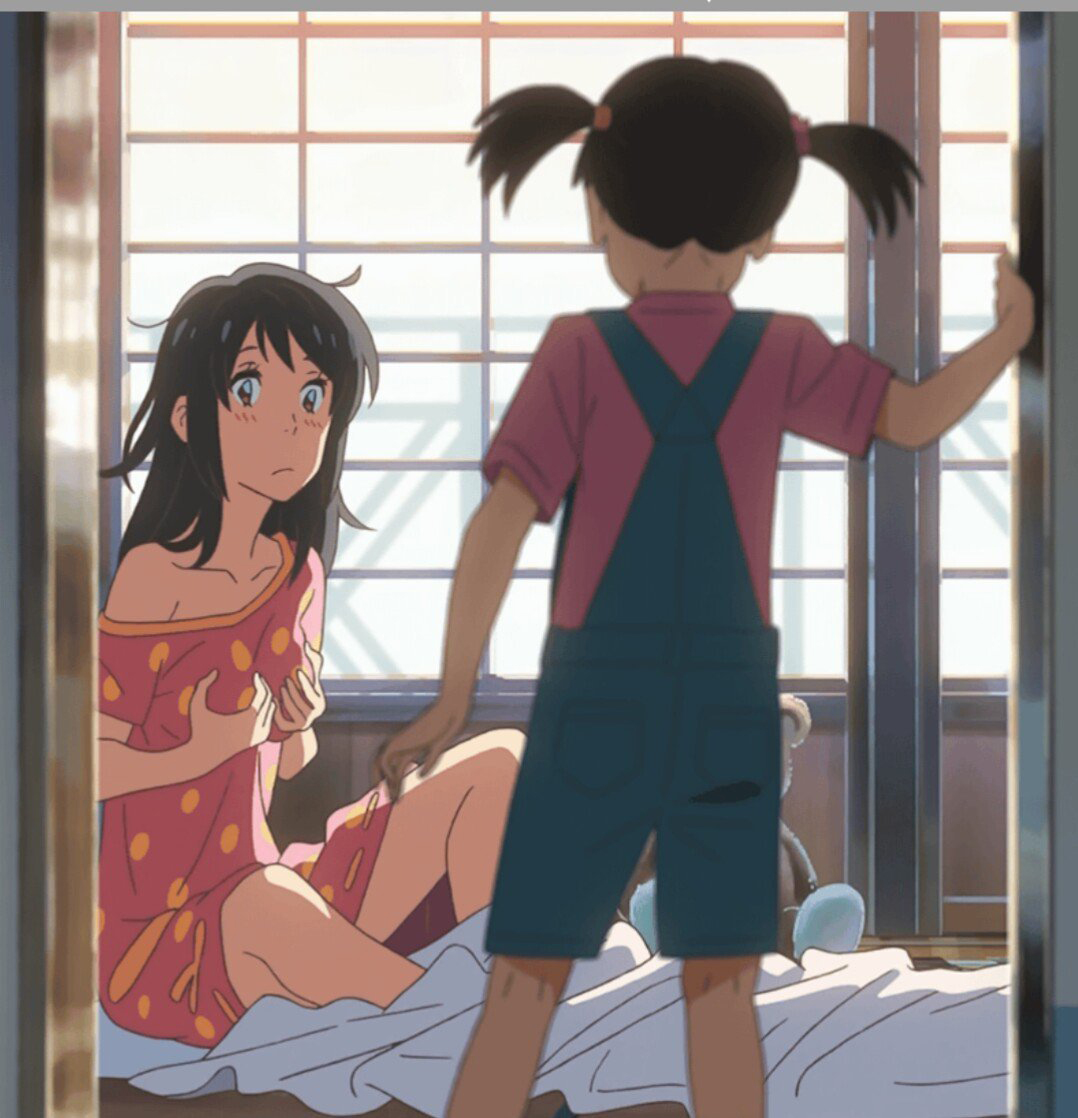
Photo credits: twitter.com
One day Mitsuha tells Taki about a comet that will pass by on the day of his date with the beautiful Okudera. At Itomori, that will be the day of the autumn festival. The boy does not understand what she's talking about but, when he tries to call Mitsuha on the phone for the first time, his attempt fails. He understands that for them it is no longer possible to switch bodies and so he decides to go and meet her in person. When he finally discovers the name of her village, he also finds out that it had been destroyed three years before. A fragment of the comet Tiamat had fallen on Itomori destroying the village almost completely and killing a third of the inhabitants, Mitsuha as well.
Taki then goes to the sanctuary of the local guardian god, Musubi, on top of Mount Hida just outside the village. After entering the holy place he decides to drink the Kuchikamizake, the sake prepared by Mitsuha and that he himself, with her body, had left there as an offer. This allows him to actually travel back in time. He sees Mitsuha's past and wakes up in the girl's body again, just before the comet's fall. Aware of what will soon happen Taki does everything to ensure that the inhabitants of the village recognise the danger themselves. But he also knows that this is his last chance to see Mitsuha. He runs to meet the girl at the top of Mount Hida, where his body of the future had been left. Here, the two protagonists can see each other, for a few moments, before their memories are erased. Their commitment saves the village thus changing the course of history, but at the same time leaves a sense of emptiness inside of theme. A hole left from something to which they can not give either a name or a face that urges them to look for each other, even if they have no recollection of what had happened.
The Success

Photo credits: one--anime.blogspot.it
The film, which premiered in July 2016 at the Anime Expo in Los Angeles, was then released in Japanese cinemas starting from August that year. Immediately acclaimed as a masterpiece, in its triumphal march it reached 92 countries, earning more than 355 million dollars. This makes it the 1st-highest-grossing-anime in history. A goal that even authors themselves did not expect to reach.
This commercial success made it the 2nd-highest-grossing film of all time in Japan after Hayao Miyazaki's Spirited Away. It also is 4th-highest-grossing film after Titanic and Frozen. But it has also earned the position of most watched Japanese anime in several other countries of the world.
As for Italy, the first Italian trailer was released only on December 6, 2016. Subsequently, the film was screened in about 160 theaters from 23 to 25, January 2017 thanks to a collaboration between Dynit and Nexo Digital. The success at the box-office was so great that several other dates were decided, with a total income of around 700,000 euros.
Looking at these numbers, it’s no surprise that director Shinkai has been sometimes referred to as Hayao Miyazaki’s successor. Title that the person himself has humbly refused saying he does not deserve it.
Themes and Symbolism
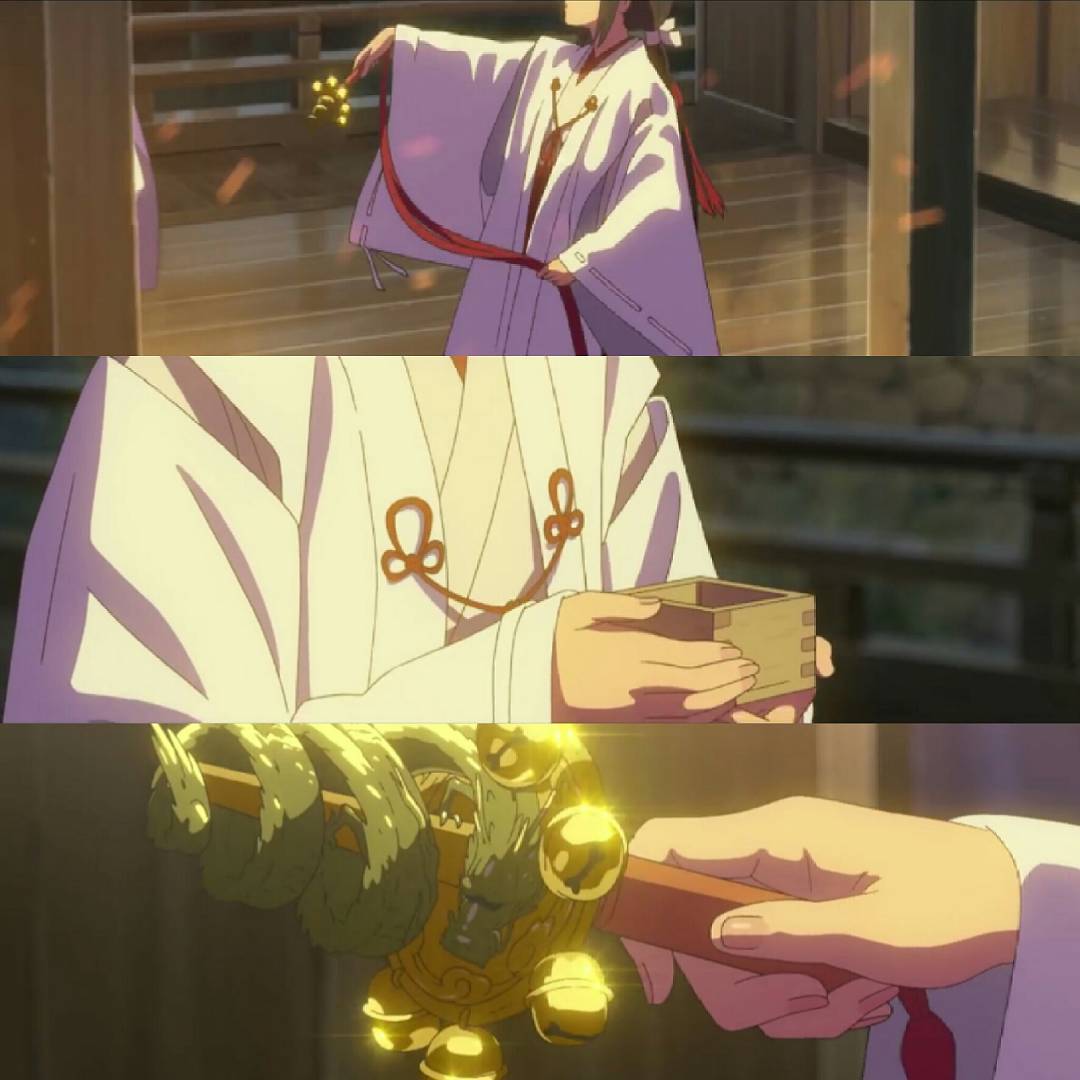
Photo credits: instarix.com
The inspiration for the story came to the author from works such as Inside Mari by Shūzō Oshimi or Ranma ½, as well as from classical works such as the Torikaebaya Monogatari dating back to the Heian period (794-1185). But another source of inspiration for the author seems to have been an ancient poem by the poet Ono no Komachi, who lived between 800 and 900. In one of her poems the woman wrote: "Before I slept I thought of him, and into the dream he strayed. Had I known it was a dream, in the dream I would have stayed."
And in fact, rather than swapping, the two protagonists of Your Name dream of each other. This is possible because Mitsuha is a priestess devoted to the God Musubi, the deity that governs experiences and human connections. When Taki, in Mitsuha's body, reveals himself to her grandmother, the old woman does not seem so surprised. Indeed, she herself had experienced the same thing, being it a particular family power, even though she no longer remembered the boy in her dreams.
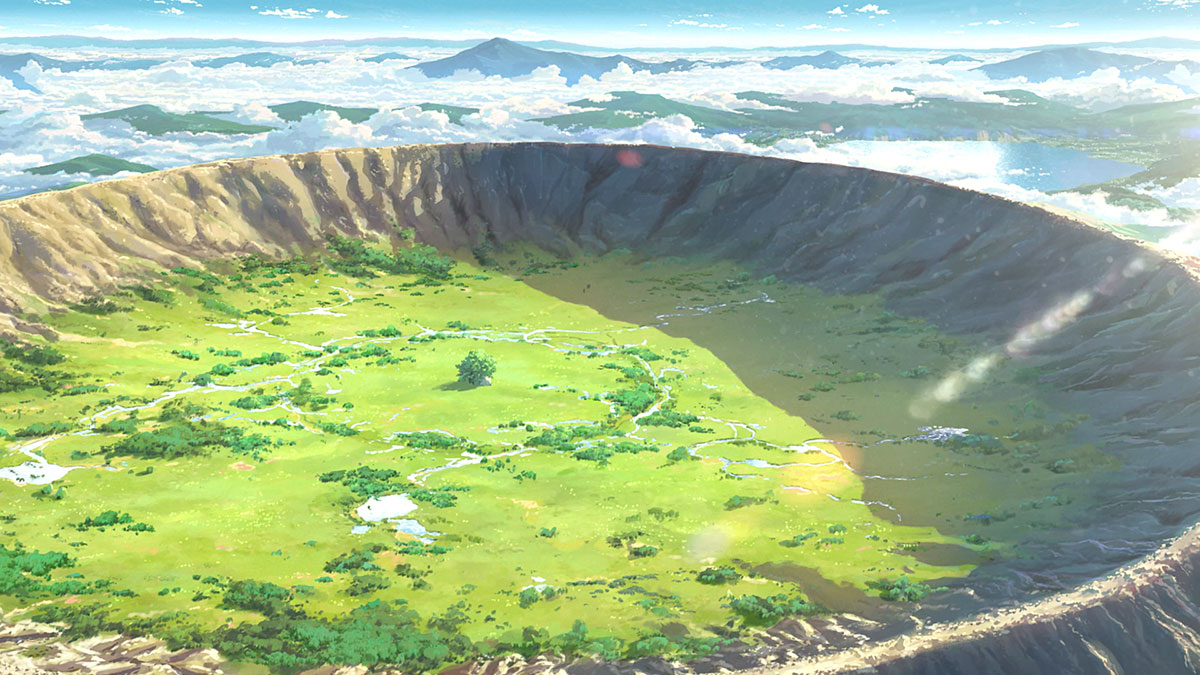
Photo credits: forum.gamer.com.tw
Located at the top of a mountain that appears to be the crater caused by a previous appearance of the comet, the temple is a sacred place. It represents the boundary between the kingdom of Gods and Earth, between the realm of the living and that of the dead. To return to the mortal world you have to leave a part of yourself, and Mitsuha left a part of herself in the sake she prepared. The creation of the Kuchikamizake is a family tradition, along with traditional dances and braiding threads. It is a particular method of creating sake which involves chewing rice to activate its fermentation.
In this regard, Mitsuha grandmother’s words are very important:
“Musubi is the old way of calling the local guardian kami.
Tying thread is Musubi. Connecting people is Musubi.
These are all the kami’s power.
So the braided cords that we make are the kami’s art and represent the flow of time itself.
They converge and take shape. They twist, tangle, sometimes unravel, break, then connect again.
Musubi-knotting. That’s time.
Musubi is also sharing something with others”
These words not only represent a very profound spiritual concept, but also make us understand the power of Taki’s gesture when he drinks the sake prepared by Mitsuha. In fact, this gesture is a symbolic act of profound connection in which the young man assumes in himself a part of Mitsuha and of her spiritual power, allowing him to meet her as well.

Photo credits: fakemorisummer.wordpress.com
Equally symbolic is the fact that the two of them meet at sunset. In fact, according to ancient legends sunset is the moment when the boundary between the world of the spirits and the world of the humans fades for a short moment. And that's why they can finally meet, even though Mitsuha had died 3 years before. The two, however, have to sacrifice their memories in order to return to the earthly world.
Another Japanese legend finds its space in the story. Taki and Mitsuha seem to be linked by what many know as the 'red thread of fate’ that is said to tie two people destined to be together. Red thread that, in this case, is symbolized a thread that Mitsuha herself had made and then gave to Taki.
Shinkai, who as we said before did not expect the worldwide success it had in terms of audience, said that it was his intention to create a film that targeted Japanese youth. He wanted to create something that would push them to believe in their future.
He said: "I created this movie hoping that younger audiences would believe that ‘maybe there is the one in my life I might have not met yet but hopefully will see tomorrow or in the future.’ "

Photo credits: www.amazon.co.jp
Another important issue addressed by the film is the juxtaposition between the small rural village and the great metropolis of Tokyo, something that the author himself has experienced. In fact, he grew up in a small village and later moved to Tokyo, which is common to many young Japanese people.
Here we see Mitsuha, she lives immersed in local traditions but yearns for the city life; and we see Taki, immersed in city life, that learns to appreciate the past and traditions.
Once again, it is the grandmother's words that help us: "Even if the words have been lost, it is important to preserve these traditions". With this, it looks like she want us to remember where we come from, in opposition to her son, a corrupt local politician who chose to abandon the temple completely.
Ancient traditions represent the founding substratum of a community, what the present is based on and which binds people together. And also what enables them to face even the darkest times.
Japan is no stranger to natural disasters, just remember the recent earthquake in 2011, or the great Kanto earthquake in 1923. And how to forget the atomic disaster that put an end to Second World War. In all these occasions Japan has always found the way to start anew, placing one interest over the others: what can we do to prevent this from happening again. No wonder then that in this film the two protagonists try to prevent what would have been a real tragedy.
The goal of the film is to give hope, but also invites us to never forget our roots and the spiritual union that they can create.
We could therefore say that Your name has a cathartic function for the viewer.
Strong Points

Photo credits: Lovejude
Whether you are among those who liked the film or not, Your Name certainly has several objective strong points.
First of all, the animation and the extremely realistic render of setting, as it is in the style of the author after all. The film’s landscapes are described in every detail and the colors are warm and bright. The images are so vivid that are able to convey, even with their colors only, the intense and pure emotions of the protagonists, thus contributing to the cathartic function of the film.
Also worthy of mention is the soundtrack that was composed by the vocalist of the Japanese rock band Radwimps, Yojiro Noda.
Noda, specially requested by Shinkai himself, had only one request to respond to :
“make it in a way that the music will (supplement) the dialogue or monologue of the characters".
And considering the results we can say that this soundtrack is one of the keys to the success of the film..
This world seems like it still wants to keep me tamed
As you wish, then- I'll struggle beautifully.
Your Name Theme song - Yojiro Noda
Yet despite the positive critics, Shinkai claimed that the film is actually not as good as he had thought. The lack of time and funds forced him to deliver to the public a work that he himself calls incomplete. He stated : "There are things we could not do, Masashi Ando [Director of animation] wanted to keep working [on] but we had to stop for lack of money ... For me it’s incomplete, unbalanced. The plot is fine but the film is not at all perfect. Two years were not enough."
Related Products and Remake

Photo credits: Amazon.co.jp
In addition to the film, products related to Your Name include other works, such as a novel, manga, film guides and CDs. In December 2016 alone, the sales of these products amounted to around 2.5 million copies.
The novel and manga of the same name are published in Italy by the J-Pop publishing. The Blu-ray and normal DVD versions, released in July 2016, arrived in Italy in November 2017.
Sales confirmed the success in cinemas.
Last September it was also announced that Kimi no na wa will soon have a Hollywood live action adaptation.
The chosen producer is none other than J.J. Abrams (Star Trek, Mission impossible). The announcement has already triggered the reaction of many people, both fans of the film and those who are simply curious. There are many voices worried that this adaptation could overturn what is considered a masterpiece.
And records do not seem to play in favor of this live action. It is still recent news that the director of Death Note's Netflix remake had to close his Twitter account after being strongly attacked for his work. Attacks that did not spare another adaptation of the popular anime Ghost in the shell, whose film with Scarlett Johansson did not really satisfy its fans.
Kimi no na wa is certainly not a easy film to adapt in a western setting because of its numerous references to particular places and particular cultural and religious concepts. Think of Mitsuha and her family, guardians of the shrine of the deity Musubi and the ancient traditions of the village.
As for the places, in addition to Itomori which is a fantasy village, there are real cities. Not only Tokyo, but also Hida, and the Itomori Lake itself is inspired by a famous Japanese lake, Lake Suwa.
Only time will tell us what the future of this adaptation will be.
Trailer:
Japan Travel: Nikkō
Nikkō - The timeless town

Not far from Tokyo, there is a town that could be described as magical. This is Nikkō, literally "The town of sunlight”. Located in the mountainous region of Tochigi Prefecture, it is one of the most famous tourist destinations in Japan. Rich in historical monuments, it has been listed as an UNESCO World Heritage Site. Its most famous monuments are the Nikkō Tōshō-gū shrine dedicated to the shogun Tokugawa Ieyasu, and the Futarasan shrine dating back to 767.
The city is also surrounded by nature with mountains, hot springs and the Nikkō National Park where several beautiful waterfalls can be found.
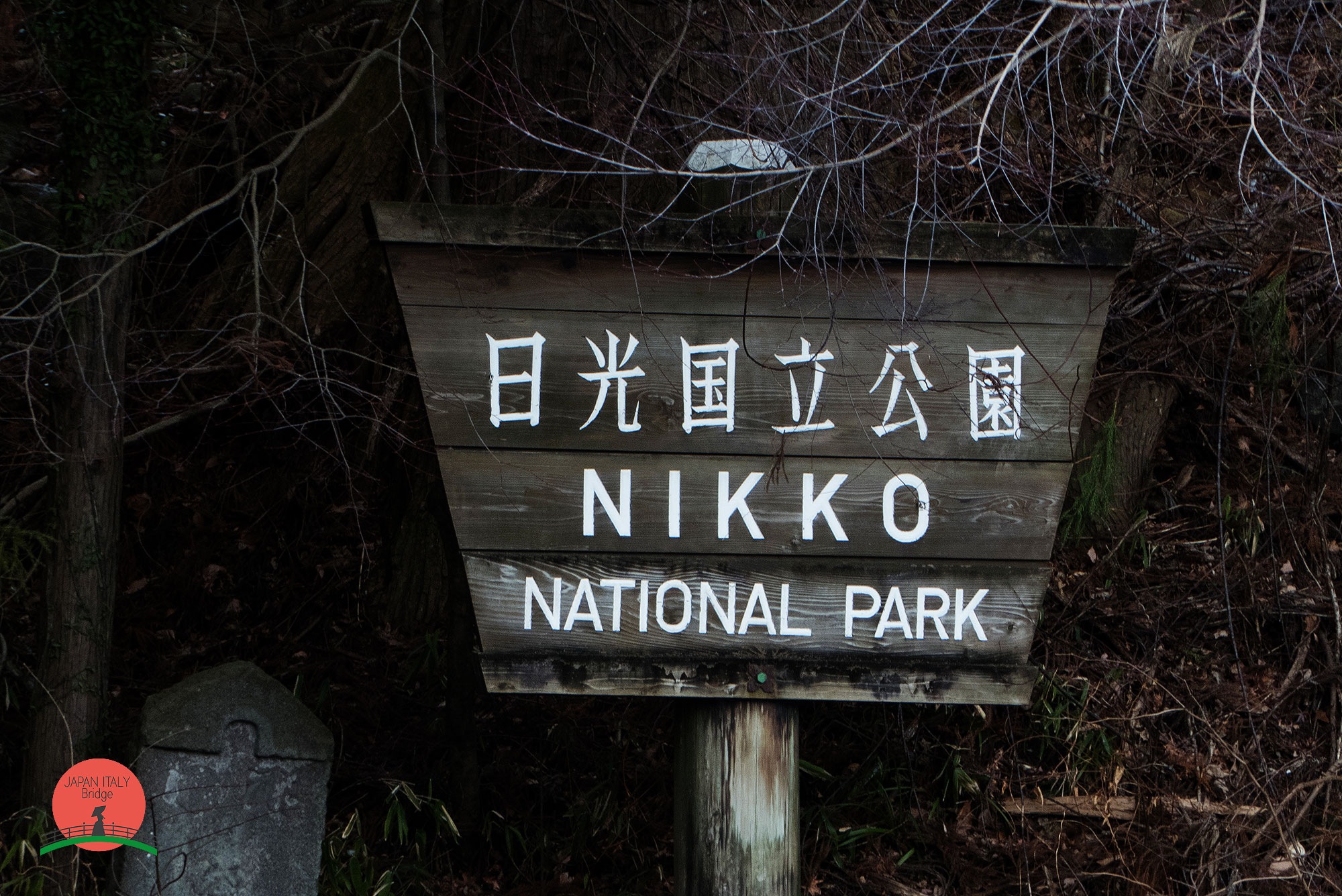
Between sacred and modern
On March 20, 2006, the old town of Nikkō merged with the city of Imaichi and the municipalities of Ashio, Fujihara and Kuriyama, resulting in the new city of Nikkō . Sacred and profane, a division that is even more evident thanks to the great "sacred bridge" Shinkyo, completely lacquered in red and that was originally reserved to the emperor and the shogun. Today, this same bridge is crossed by hundreds of visitors each year arriving at the Rinno-ji, the great temple best known for the "Three Buddha Hall".
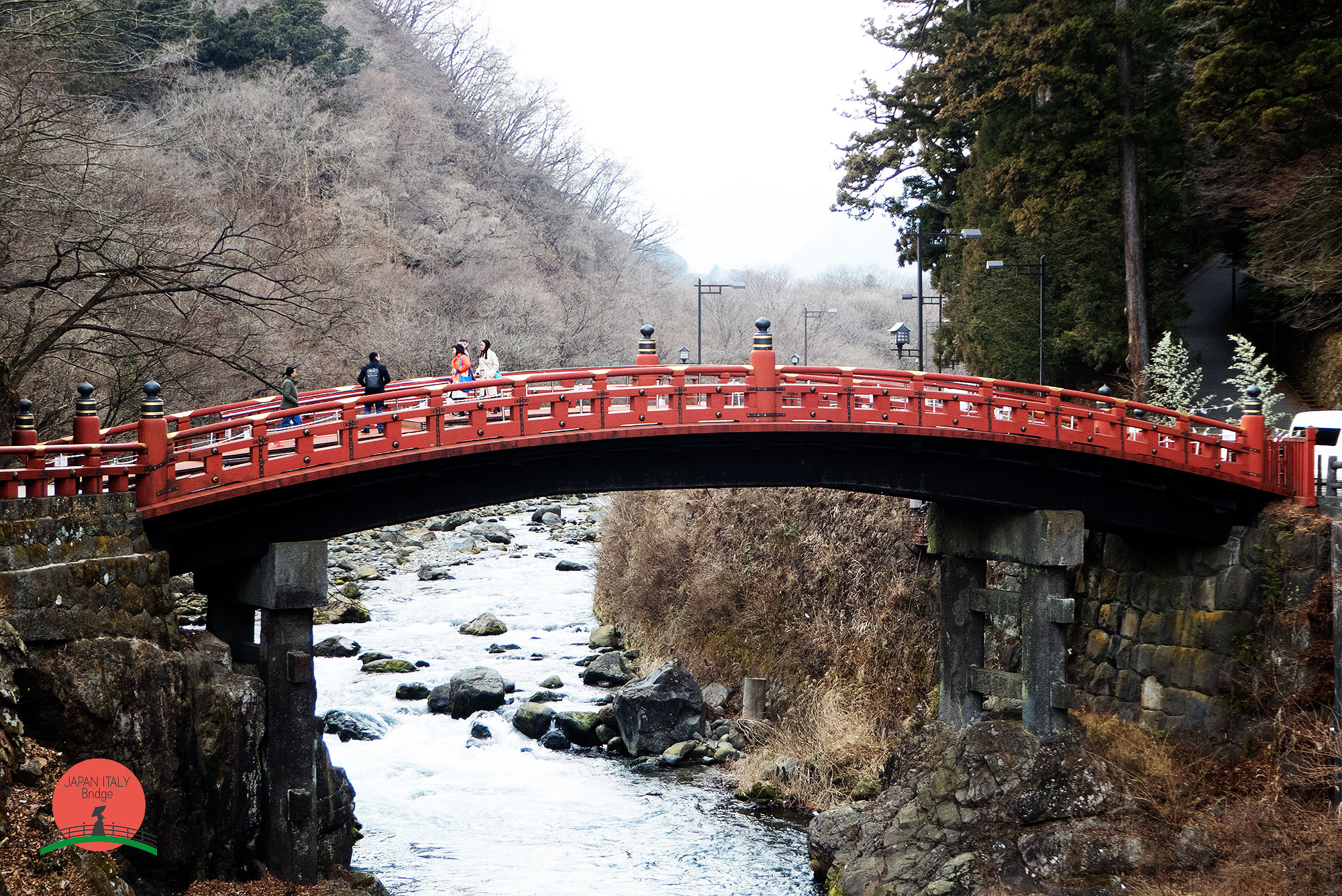
Monuments
Behind this temple there is the Tōshō-gu shrine where the great Tokugawa family established their Shinto shrine making it the most richly decorated temple in the country. More than 15000 artisans of the country participated in its construction and with its gildings, its bright colors, its sinuous lines, this place of worship is considered as one of the most beautiful examples of Momoyama architecture (1573-1603). Even more famous is the pediment of the sacred stables, genuinely minimalist and especially known by all the Japanese for the three little monkeys carved in the wood: Mizaru ("the blind"), Kikazaru ("the deaf") and Iwazaru ("the mute"). In fact, they symbolize the precepts of the Tendai Buddhist sect, inspired by Confucius: do not look at evil, do not pronounce it, do not listen to it.

If you have a whole day to explore the city, you can not miss the opportunity to visit the statue of the sleeping cat that marks the entrance to the tomb of Tokugawa Ieyasu. Subsequently, along the Daiyagawa river, you can find the Kanmanga Fuchi path, a sumptuous walk through the woods and the strange volcanic formations of Mount Nantai. At the end of this walk, dozens of statues of Jizō, protector of the children, await you where time seems to have stopped.

At a distance of 30 km from there, you can then find the magical Chūzenji lake, where you can take a boat trip to the spectacular Kegon no Taki waterfall and the Yumoto Onsen hot springs.
A city between history and modernity, between mountains and enchanted lakes, a small pearl of history not far from the metropolis of Tokyo. Here you can still perceive the classic feeling of Japanese tradition in its fullness. A destination not to be missed for all those who love this nation and its culture.
How to get here
The train is the quickest and most convenient way to reach Nikko from central Tokyo.
Tobu Line - Asakusa
From Asakusa Station, easily reachable by metro from all the main districts of Tokyo, you can take the Tobu line which offers rides to Nikko every hour. The cost per round trip is about 2800 ¥, the ride takes about 2 hours and is by far the cheapest option. The JR Pass is not valid on this route.
info: Tobu Line website
Limited express - Shinjuku
The JR limited express connects Shinjuku station directly with Nikko, the cost of a round trip ticket is 8000 yen. Unfortunately, the JR pass does not completely cover the route so, it will be necessary to pay an additional charge. To book your seat just consult the JR East website.
Info: JR East website
JR Shinkansen - Tokyo
This is the fastest and most convenient way to get to Nikko, especially if you have a JR Pass. It is possible to take the JR Tohoku Shinkansen from Tokyo station, but you will have to change at Utsunomiya and continue on the JR Nikko Line. The cost of the round trip is 10000 ¥, not recommended for those who do not have the JR Pass..
Info: Hyperdia website
Japan Travel: Shinjuku
Shinjuku
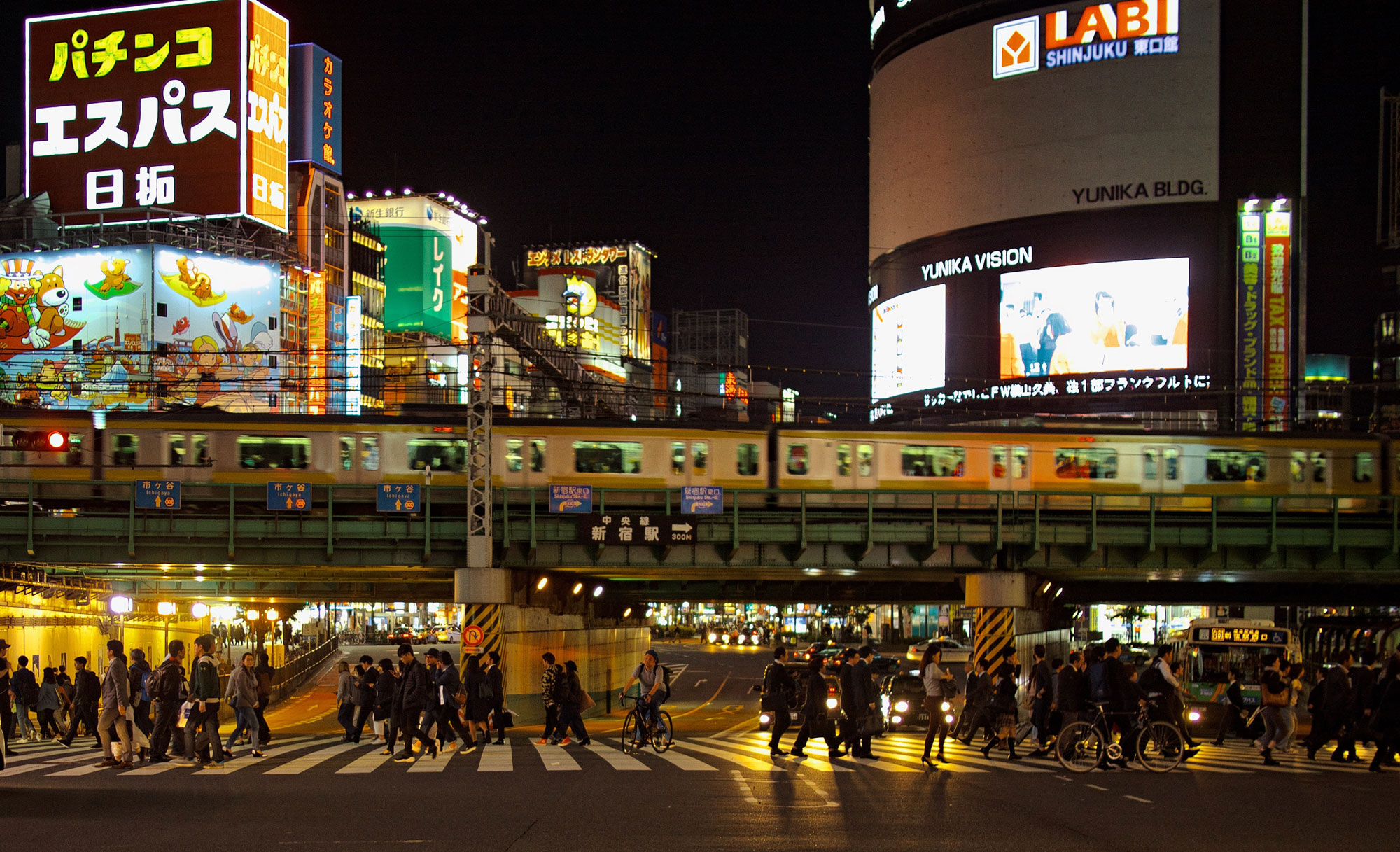
Photo credits: Sergio Rola
Shinjuku (新宿), important commercial and administrative center with the world's busiest railway node, is part of the 23 special wards of Tokyo.
Not just trains, Shinjuku is also one of the major stops for long-distance buses. The Busta Shinjuku, a large terminal, is located right at the top of the railway station.
Taking the station as a reference point, west of it, you find yourself in the Skyscraper District. Here are located the highest buildings in Tokyo including luxury hotels and the twin towers of the Tokyo Metropolitan Government building. Designed by the famous architect Kenzō Tange, it’s here that the political and public administration of the city is handled. Its towers are 243 meters high and the observation bridges, located on the 45th floor, are open to the public for free.
Right from those observation bridges, one can see the Mode Gakuen Cocoon Tower, a skyscraper located in the financial district of Nishi-Shinjuku. 203 meters high, consisting of 50 floors with three schools inside: a fashion one (Tokyo Mode Gakuen), design one (HAL Tokyo and Shuto Ikou) and a medicine one. The architecture, also designed by Tange, gives to the skyscraper a cocoon shape created by the twisted white aluminum tubes (curtain wall) that rise diagonally.

Photo credits: Google immagini
Shinjuku is not only modernity but also houses one of the largest and most enjoyable parks in Japan: the Shinjuku Gyoen, where cherry blossoms is renowned for being among the best in the country. The park was opened to the public in 1949 after being the Garden of the Imperial family since 1903.
Shinjuku’s districts

Photo credits: Gor Badoyan
Among the most famous and discussed neighbourhoods, here is Kabukichou, located northeast of the station. It is the largest red-light district in Japan, and perhaps it is for this reason that the entrance is announced by a great red light sign. The history of this district is really curious: its name derives from a kabuki theater that was never built. Since 1872, fifth year of the Meiji Era, when laws governing relations with geishas and prostitutes were revoked in Japan, Kabukichou became the main red-lights district of Tokyo. Subsequently, laws against prostitution became stricter and after the Second World War the district was subjected to some attempts to change its image. It was then made an attempt to bring here Ginza's Kabuki-za theater, destroyed by a fire, but eventually the theater was rebuilt in Ginza, while in Kabukicho just kept the name.
Later on, another theater was built in Kabukichou, the Koma Theater, located in a building that contains some bars and nightclubs.
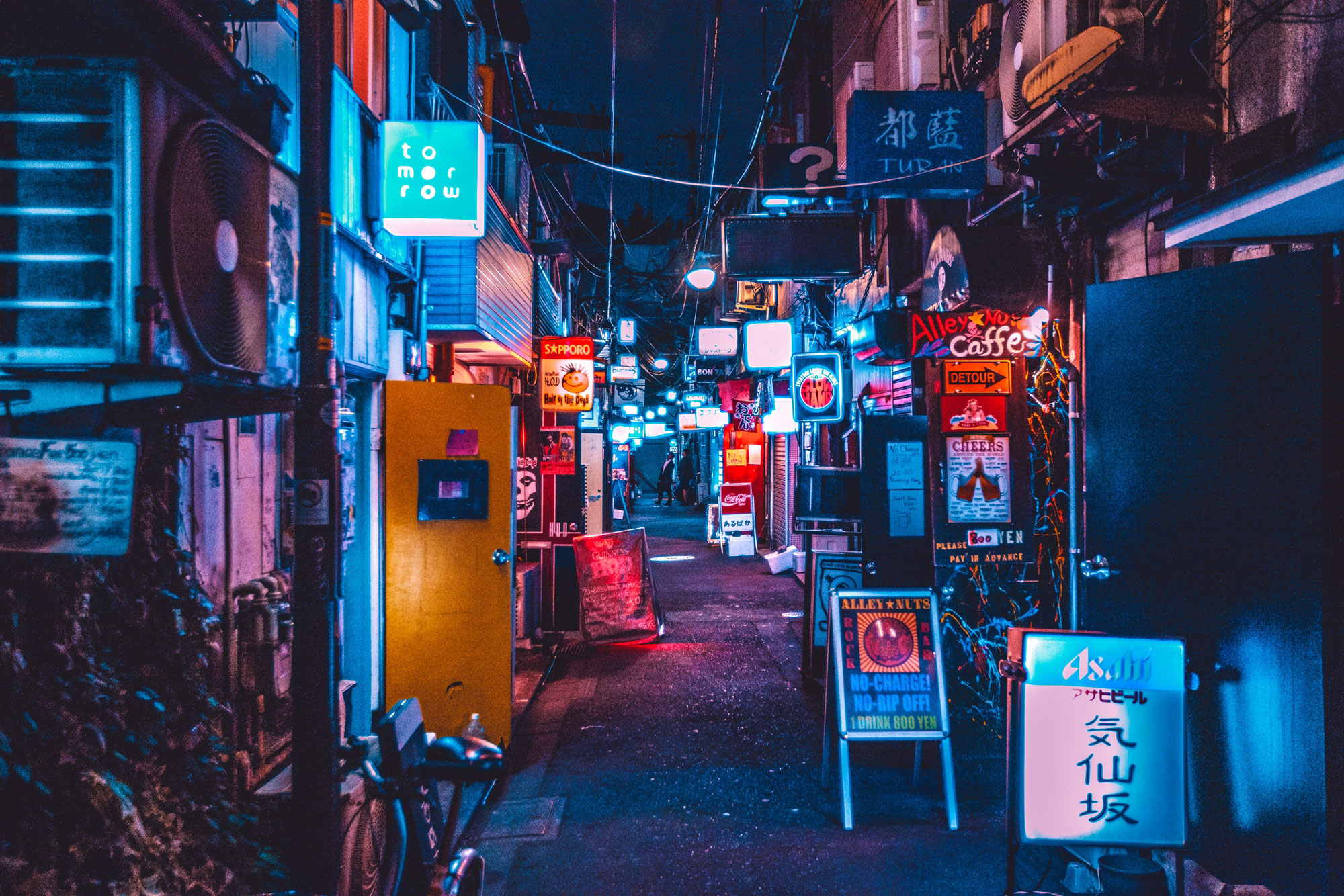
Photo credits: Benjamin Hung
Kabukichou never sleeps and this area boasts numerous restaurants, bars, nightclubs, "love hotels" and a variety of red-light structures for all sexes and orientations. Walking down Kabukichou’s streets can be risky in terms of expenses. Prices are exorbitant as everything is handled exclusively by Yakuza, one of the reasons why Kabukicho is also one of the safest neighborhoods in Tokyo because there is an attentive control over the various activities. Right here, in a maze of narrow alleys we come across the Golden Gai (the Golden Street) where a series of very small and peculiar bars peek out. The seats inside are limited, 2 to 5, and may be often located in basements as well! Moving around among them, you can hear loud laughs and if you spy inside you may spot eccentric people, writers, directors and some curious tourists. These small places can also have a theme, but in each of them what you can always drink is the yamazaki, a particular Japanese whiskey.
Out of the Golden Gai, we find Ichigaya, headquarter of the Ministry of Defense. Okubo, filled with Korean stores selling traditional food and many classical gadgets of the Korean pop culture. There are also Korean-themed bars, red-lights clubs and restaurants. Shinjuku ni-chome, is Tokyo's gay district, and finally Takadanobaba. The latter, is an area mainly frequented by students from the nearby Waseda University and Gakushuin University, there are preparatory schools and entertainments, and many bars and Izakayas. The Izakaya, consisting of the words "i" (sit down), saka (sake) and ya (shop), is a typical Japanese restaurant that sells drinks accompanied by food, a kind of pub.
The symbol of Takadanobaba is the "Big Box", a large box-shaped building next to the station.

Photo credits: Google immagini
Sacred and profane

Photo credits: Node Reaver's Blog
It sounds incredible, and yet it is right among Shinjuku’s skyscrapers that a space of peace and prayer opens up: the Shinto Temple Hanazono. It was founded in 1600 and is often visited by businessmen as the temple is devoted to the gods of economic success. It is almost a fundamental stop for tourists who, having walked around the chaotic Shinjuku, want to find some rest and, every Sunday, look around the antiques market. There are many festivals and religious events that take place at the Hanazono, the main one is held the last weekend of May, the Jinja Reitaisai. On this occasion there is a modest procession in which the small mikoshi is carried by the worshippers. Outside the temple 100 stands of every kind crowd the surrounding space offering a perfect interweave between sacred and profane.

Photo credits: Google immagini
Japan History: Maeda Keiji
Maeda Keiji

Photo credit: wikipedia.org
Maeda Toshimasu, (1543-1612) also known as Maeda Keiji or Keijiro, was a Japanese samurai who lived in the Sengoku Period (1467-1568).
Born in Nagoya, he was the son of Takigawa Kazumasu, who was later adopted by his uncle Maeda Toshihisa, brother of Maeda Toshiie. He served under Oda Nobunaga with his uncle and was initially the heir of the clan. However, Nobunaga replaced Toshihisa with Toshiie as head of the Maeda family, and Toshimasa lost this position. At that point, the disagreements between him and his uncle Toshiie began, and it is said that they often quarrelled.
In 1581, he made a reputation for himself under his uncle’s command in a conflict in the Province of Noto. During the Battle of Komaki-Nagakute, three years later, Toshimasu saved Sassa Narimasa when he was attacked at the Castle of Suemori.
In Kyoto, he met Naoe Kanetsugu the karō (samurai and senior advisors at a daimyō service) of Uesugi Kagekatsu. The two of them became friends and Toshimasu joined the Uesugi clan in the invasion of Aizu. The invasion failed, and Keiji led the rearguard during the retreat.
In the battle, however, he was able to give a splendid show of force riding on his inseparable horse Matsukaze, 'the wind among the pines', while brandishing his spear. Due to Keiji’s actions, the Uesugi's forces were able to retreat intact, while the samurai returned to the capital devoting himself to art and literature.
He was later barred from Toyotomi Hideyoshi’s campaign in Kyushu for his wild behaviour. But when Tokugawa Ieyasu challenged the Uesugi clan in 1600, Keiji once again fought with them.
In the battle against the Mogami, legend says that he succeeded in breaking the enemy lines with only eight riders, shattering their formation.
After the Uesugi clan retired in the Yonezawa Domain, Toshimasu remained with them.
According to the legend, after Keiji’s death, his horse Matsukage, that shared with his master the same indomitable personality, ran away never to be found again. It was a magnificent horse that no one else but Keiji had been able to tame, and so powerful to carry his master’s large frame.
It is still possible to see Keiji’s armour at the Miyasaka Museum.

Photo credit: wikipedia.org
Keiji - Hana no Keiji

Photo credit: vignette3.wikia.nocookie.net
The character of Keiji Maeda was so characteristic and so eccentric that he was chosen as the protagonist of a series of manga, Keiji ( 花の慶次 - Hana no Keiji). The story is written by Keichiro Ryu and drawn by Tetsuo Hara, better known for his other work, Fist of the North Star.

Photo credit: Google images
The manga tells the adventures of the greatest kabukimono that ever existed in Japan. A kabukimono is an eccentric person who loves to stand out from others for his behaviour and his appearance, and who has the ultimate goal of imposing his will on others.
Keiji is the son of Takigawa Masuuji and one of his concubines. At that time, the Maeda family was a vassal of the Takigawa clan, and during a reception, Maeda Toshihisa met the girl and asked Takigawa for permission to marry her. On the wedding night, the bride confesses she is already pregnant with her former lord. But instead of killing her (as it was customary in an era where honour and noble blood were fundamental) Toshihisa adopted the child.
Thus, at his birth Keiji (whose full name is Keijiro Toshimasu Maeda) officially became Toshihisa's son and so nephew of Maeda Toshiie, one of the richest Japanese feudal lords of the Sengoku era. During this time, great battles take place in order to decide who will rule Japan after Oda Nobunaga. Keiji, raised on battlefields and gifted with great strength, participates in many of these events.

Photo credit: ayakashi-ghost-guild.wikia.com
His character has a strong sense of honour and personality that follows the basic principle of being a kabukimono to the fullest. Therefore, Keiji seeks to always impose his own will, aware that this means being free to act as he pleases, but also to be killed "like a dog".
Despite the eternal struggle with his uncle, who tried to kill him repeatedly, Keiji remained in the clan and so under his uncle's authority until Toshihisa's death. It was after that when he began to behave in such a way that got him expelled from the clan. This will save the honour of the clan itself since a samurai who voluntarily abandons his master dishonours him.
The Characters
Various fictional characters accompany Keiji in his travels and adventures.
In the first chapter of the manga, Keiji meets and binds with the "diabolic" horse Matsukase, "wind in the pines" (a copy of Black King, horse of Raoh – Fist of the North Star). It is an unusually big animal and therefore able to endure Keiji's weight, but no one else can ride it. Since then, the two of them are inseparable.
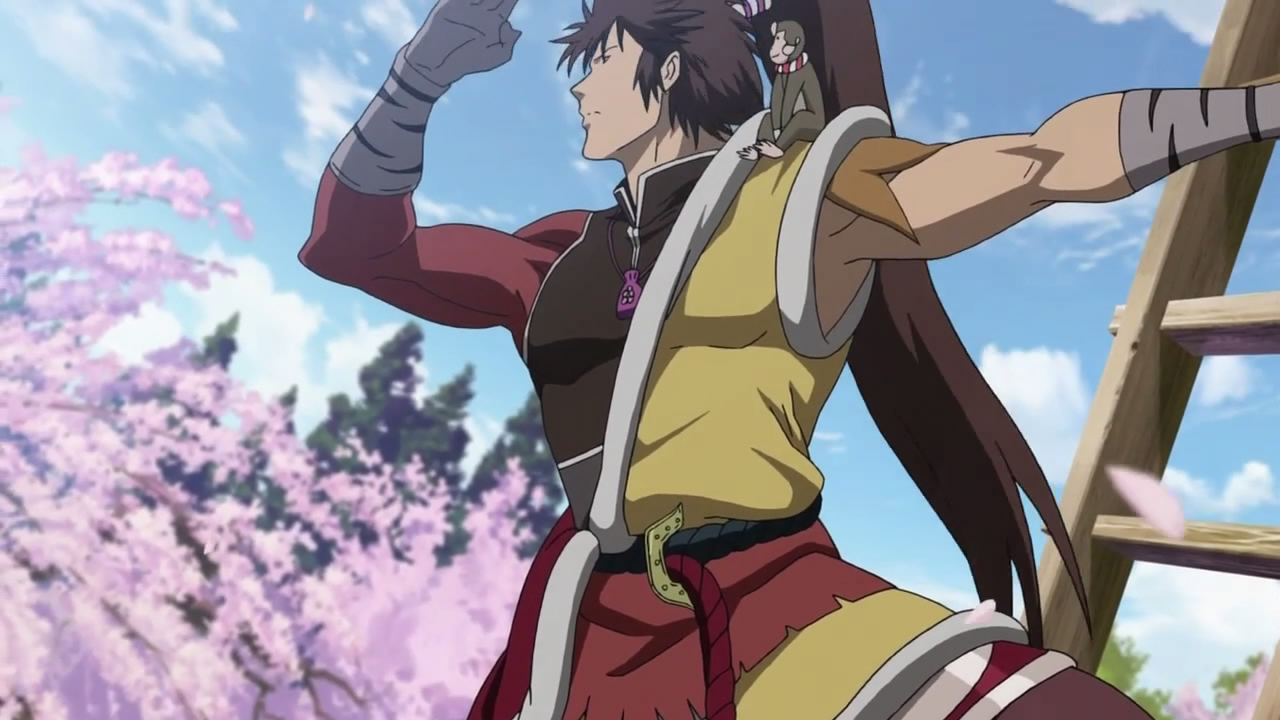
Photo credit: Google Images
For a time Keiji was accompanied by little Ofu. He meets the girl when he was challenged by the martial arts expert named Gankibo. Ofu had to follow him carrying a bucket on his head where he gathers the ears of dead enemies. The spirits of the fallen torment her and when Keiji defeats Gankibo he frees Ofu from her task, giving peace to the spirits as well. Ofu was actually 14 or 15 years old but looks like a little girl because she has decided not to grow.
The little shinobi Sutemaru is the first vassal to serve Keiji. At first, Sutemaru is part of Kaga's ninja clan serving Maeda Toshiie, and wants to kill Keiji and Matsukase (the horse who trampled and killed his brother). But soon Sutemaru decides to abandon the ninja clan to stay with Keiji, who he faithfully serves in hope of succeeding in killing him. Sutemaru fights with edged weapons, kunai and explosive weapons, as well as being often an explorer for Keiji. Peculiar of his character is the fact that he always hums when he fights and cannot lie because each time he does, his eyes become strabic.
The last important character is Lisa, a beautiful young woman with blond hair. Her father, Yoshiro, is the son of Sen no Rikyu and a Western woman, carried as a slave on a European pirate ship that will clash with Sakai merchants. Yoshiro will meet Keiji and show him a portrait of her daughter. The kabukimono will fall in love with the girl, who is desired by the Spanish pirate Carlos and the king of Ryukyu (now Okinawa, the main island of the Ryukyu archipelago) as well.
Instead, among the historical figures met by Keiji, there surely is his uncle Toshiie Maeda (also known as Mataza the lancer), the kanpaku (Emperor Regent) Hideyoshi Toyotomi, and Tokugawa Ieyasu his successor; but also Nobunaga Oda, former master of Hideyoshi and Ieyasu, and Hattori Hanzo, chief of Iga's ninjas at Ieyasu’s service. He will also meet the aforementioned master of ceremonies Sen no Rikyu, and the military commander of Yamashiro region (where the capital of the time was, Kyoto) Kanetsugu Naoe. Also, the Lord of Kanetsugu, Kagekatsu Uesugi, nephew and successor of the famous daimyo Uesugi Kenshin; Mitsunari Ishida, Hideyoshi’s favourite and Kanetsugu Naoe’s cousin, and Date Masamune, daimyo of northern lands of the country.
After Sekigahara’s Battle, where Mitsunari Ishida and Ieyasu Tokugawa are fighting for the control of the country, Keiji happens to find himself on the losing side. He was actually deployed and enlisted as Kanetsugu Naoe’s vassal to help the Uesugi clan. Ieyasu had provoked the Uesugis to seek war for the sole purpose of making Mitsunari move and expose himself. Keiji then decides to meet Ieyasu as an ambassador of the Uesugi clan. He shaves his long hair like a bonzo and gives up the compensation he is entitled to receive as a samurai of the clan. After peace was made, he decides to stay out of the scene until Kanetsugu asks him to go with him in his feud, request that Keiji accepts. The next morning, he gives up all his money and sets up an improvised party. The balloons tell us that he will move with Lisa in Nao's clan and cease to be a kabukimono.
He will die about 12 years later, under the reign of Tadakatsu Uesugi, heir of Kagekatsu.
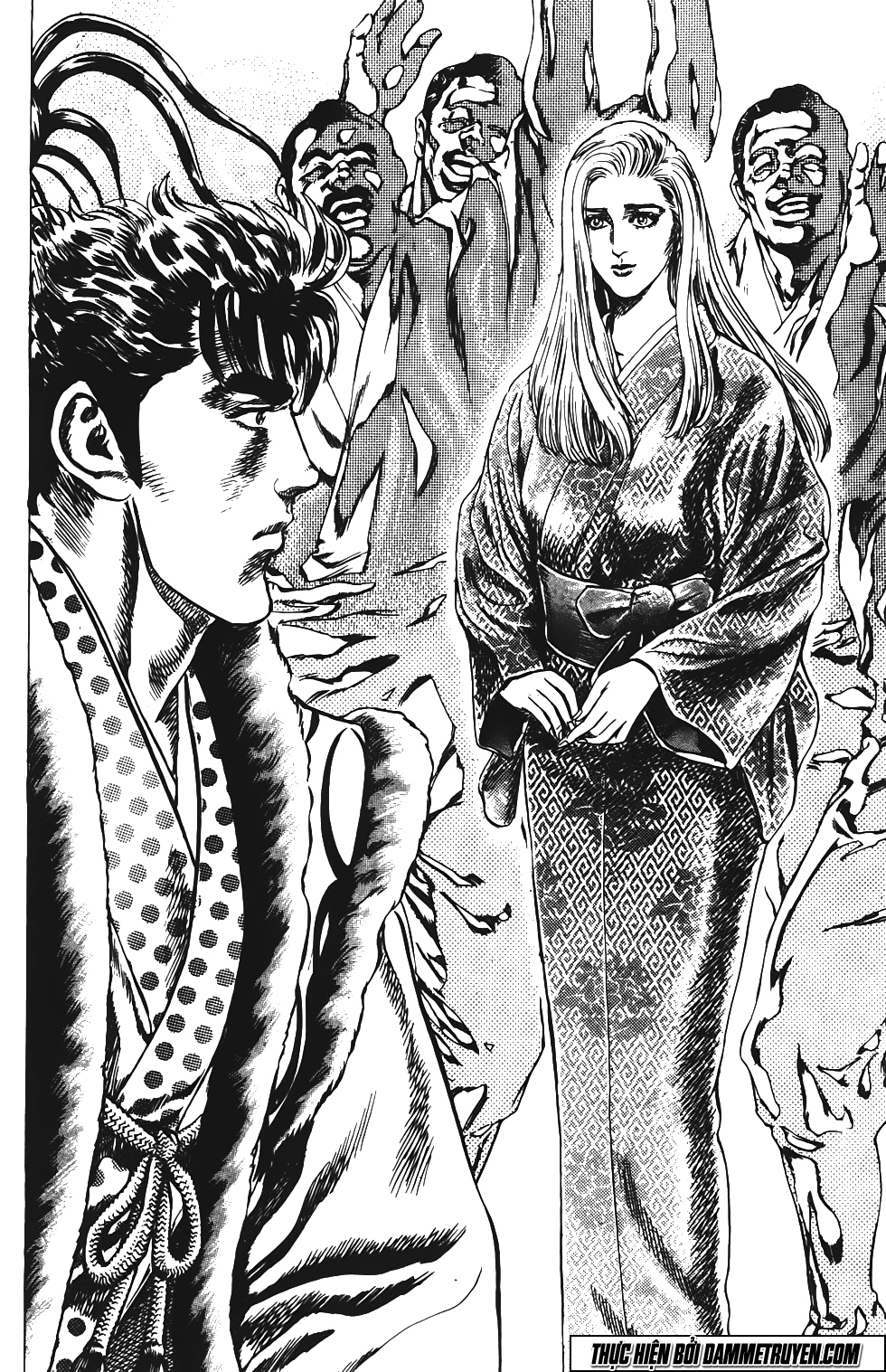
Photo Credit:truyentranhpro.com
Sengoku Basara
Sengoku Basara (戦 国 BASARA) is an anime divided into two series, based on the Devil Kings, a video game series released by Capcom, each consisting of thirteen episodes. A three-volume manga called Sengoku Basara Ranse Renbu is also based on the video game. The manga, created by Kairi Shimonotsuki and published by Udon Entertainment, is published in Italy by J-Pop. Instead, the two seasons of the anime were purchased by Yamato Video that announced it via Facebook and is part of the “Secret Project” of the Milanese publisher. The series is being broadcast on the new Yamato youtube channel from October 30, 2013.
On June 4, 2011, the feature film Sengoku Basara: The Last Party was released in Japan.
The following year, a live-action adaptation, Sengoku Basara: Moonlight Party was aired from 12 July to 20 September 2012.
Two years later, in 2014, the third television series, Sengoku Basara: Judge End, that inspired to the story of Sengoku Basara: Samurai Heroes of the video game, was aired.
Personally, I think that Keiji's character is very interesting, and above all, I think he needs to be more thoroughly comprehended. His personality differs from the others, and he is able to go against the seriousness characterizing the Samurai figure. I feel very close to him as an unstable and eccentric soul, always looking for something he can’t get but that is probably in his hands already. His way of breaking the schemes going as far as playing tricks on his relatives, the fact that he doesn’t care about etiquette and who he is. As well as his feeling a child in a body that is too big, especially for the time, and his being different, makes him a person that needs to be discovered and loved.
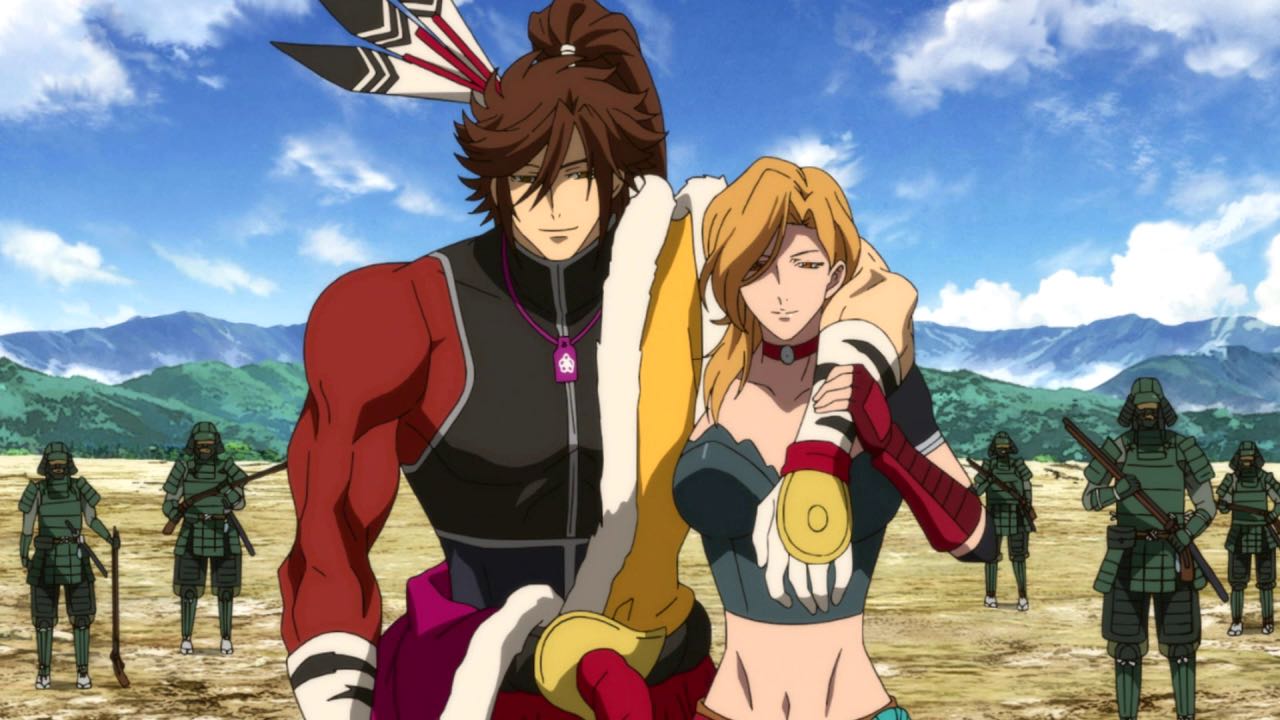
Photo credit: www.Tumbr.com
And there is also his love for Lisa that was one of the first times in which the East-West relationship was showed. A samurai who fell in love with a European woman was at that time a sort of scandal and something absolutely unusual. A beautiful story between the two, which continues to be a source of inspiration for other comics and video games.
“Everyone is weak and relies on others. As we reach out to each other, as we become friends or fight, the bond we form creates our tomorrow. “
Keiji Maeda - Sengoku Basara

Photo credit: Google Images
Japanese Traditions: Ōmisoka - New year's traditions
Japanese Traditions: Ōmisoka - New year
Shogatsu (or Oshogatsu) is the new year for the land of the Rising Sun.
In the Meiji period, this date was coinciding with the Chinese lunar calendar, but during the restoration of the same period, Japan changed to the Gregorian calendar too, fixing January 1st as the festive day we all know.
For the westerners it’s almost impossible to think to gather 365 days in just one moment. However, opening your eyes in front of the sight of the Hatsuhinode (the dawn of the first sun of the year) it is considered good luck and as the representation of the year that’s about to begin. However, every year, celebrations start on December 28th when all the preparations for new year begin. During the days of the Shougatsu Sanganichi, only the primary services are available, while Japanese people dedicate themselves to the Susuharai, cleaning of the whole house to get rid of all the negative traces of the past year. Kadomatsu (pine braches) and Shimenawa (straw rope with stripes of colored paper) are hanged on the doorsteps to keep the bad spirits away.
Japanese postal office are actively sending out and delivering cards for the best wishes that need to reach friends and families before new year’s day, the nengajou (年賀状).
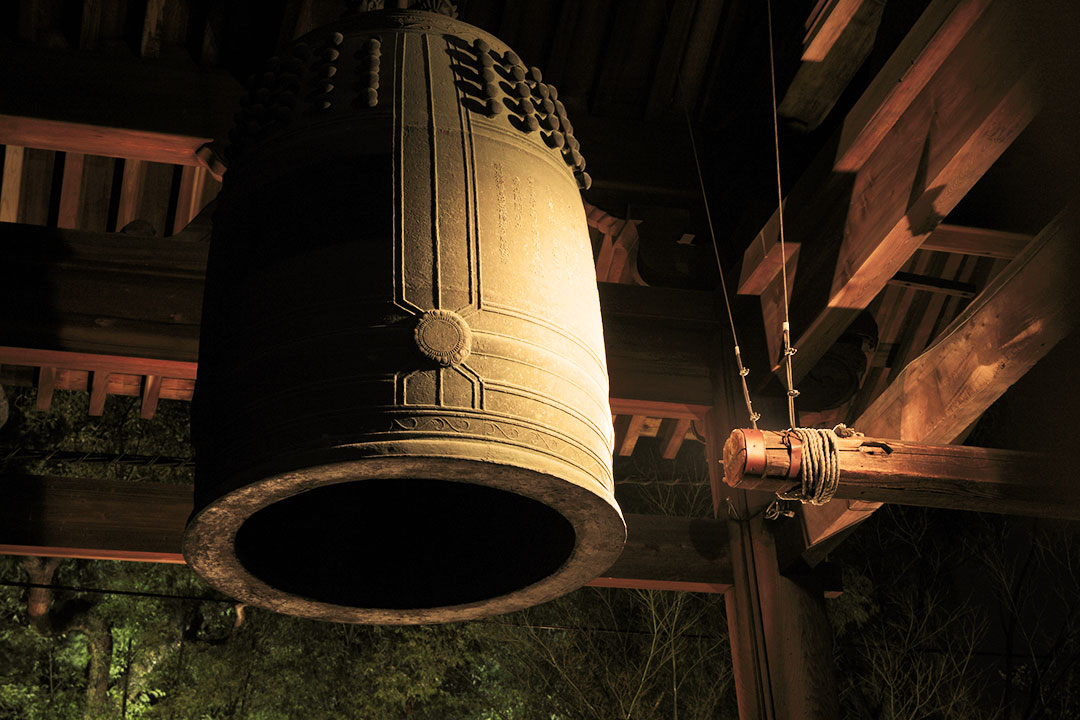
Everything is ready to spend the time with the family and on December 31st, that's when the Ōmisoka begins (literally New year’s eve, the last day of the year).
Around 10:30pm the Joya no Kane, the tolls from the Tsurigane (bell of the temple), begins. They are very slow, because the first toll has to stop ringing before a second one is taken. They go on until midnight for a total of 108 tolls. They are said to be purifying for all those who listen so that it’s possible to face a new chapter of our lives.
Traditional foods
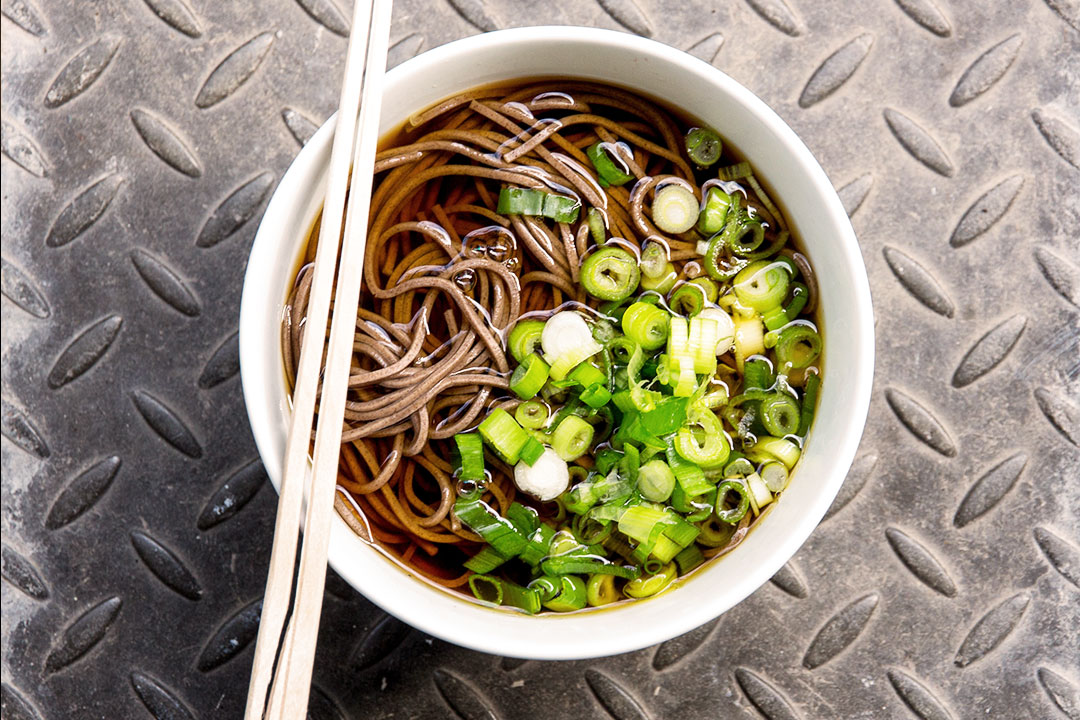
In this night it’s tradition to eat toshikoshi soba (年越しそば), noodles made with buckwheat, eggs and hot broth. The length of the noodles are auspice of a long life, their digestibility indicates the interior cleanliness and the ease in cutting them are a symbol of the removal of all bad things of the past.
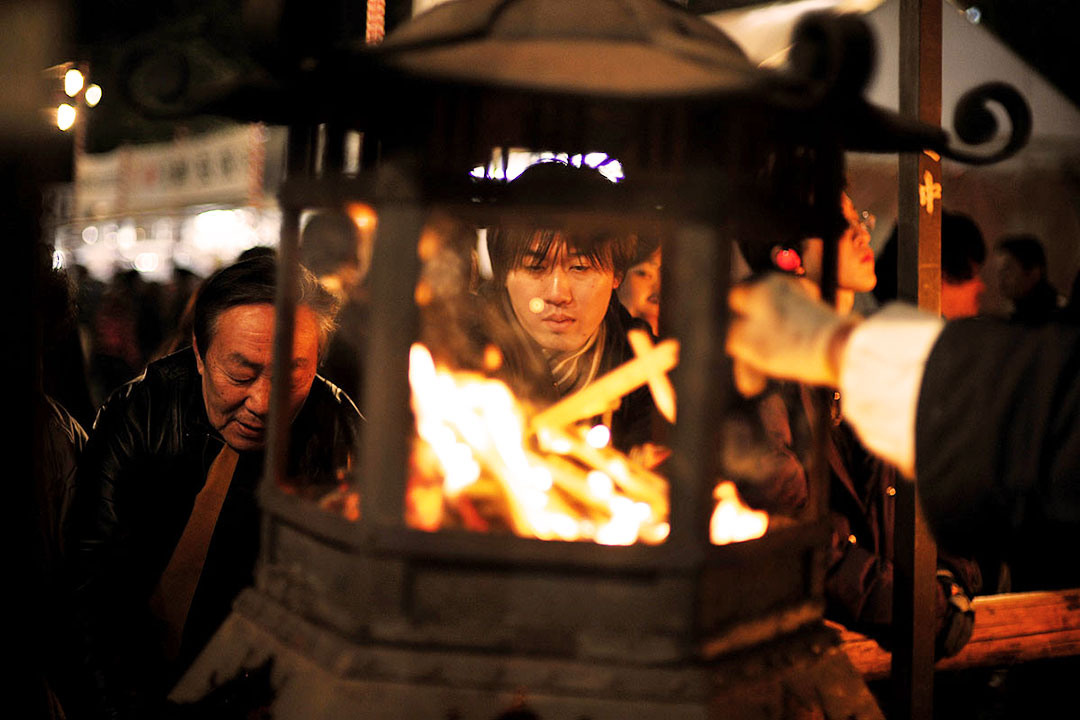
The day after, the first visit to the temple takes place, the HATSUMOUDE (初詣). To pray for health for every family member and their happiness is the right spirit to face a new beginning. Furthermore, Japanese kids usually receive a small engraved envelope, bukuro (袋), containing some money (otoshidama, お年玉).
Family and festivities are connected together also thanks to the food. On the tables you can find theosechi-ryouri (お節料理), specialties coming from the tradition like the kombu (昆布) weed. The kamaboko (蒲鉾, fish cake), kurikinton (栗きんとん, mash potatoes with chestunts), kinpiragobo (金平牛蒡, burdock boiled roots). The most loved and well known Kuro-mame (黒豆, sweet black soy beans) and of course sushi and sashimi. Due to all these specialties, on the 7th day of January there’s the jinjitsu (人日), the day for “stomach rest”, when you only eat the the nanakusa-gayu (七草粥, the soup of the seven herbs made with rice).
If you ever had the chance to be in Japan during the Ōmisoka, tell us in the comments or on our facebook page! We'd love to hear your thoughts and experiences.
Image source: Google








